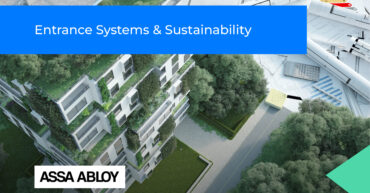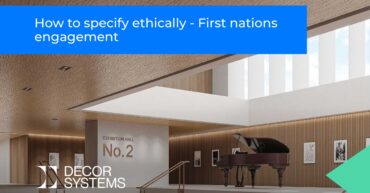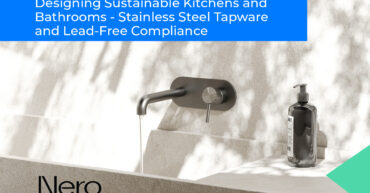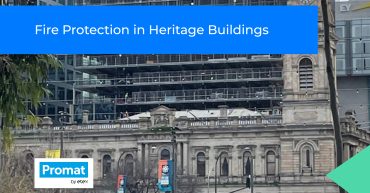Facades Under Fire – Fire Performance Requirements For Cladding
There have been several cases, over recent years, in which the presence of combustible façade materials on high rise buildings has resulted in fires. The worst example, which took place at West London’s Grenfell Tower in 2017, resulted in significant loss of life. This incident, along with a string of similar fires both here in […]
Commercial entrance solutions have come a long way. Vastly different from the entrances which were in place 20 or more years ago, they have become sophisticated systems designed with an understanding of security requirements and the ways people move within buildings. Just as importantly, they are designed to do this with minimal disruption and while […]
Far from a ‘static’ practice, Indigenous design is in a constant state of adaptation and change. Artists are continuously evolving the styles and mediums with which they choose to tell their stories, continue their traditions and provide, financially, for their families and communities. At the same time, over recent years, the broader community’s acceptance and […]
As with all aspects of the construction sector, the specification of level entry thresholds in Australia involves compliance with the National Construction Code (NCC). As is also standard, compliance of these products can involve either the more prescriptive and standardised Deemed-to-Satisfy (DTS) solutions, or Performance Solutions (which vary according to the specific job). In the […]
Architecture is a powerful medium for storytelling, offering the chance to forge meaningful connections to place and culture. For Indigenous communities, these connections are deeply tied to the concept of Country—a holistic relationship with land, water, and sky that shapes identity and traditions. While Indigenous perspectives in architecture have historically been underrepresented, architects and designers […]
In recent years, the conversation around sustainable design has expanded beyond aesthetics and functionality to include environmental impact, health, and long-term safety. Kitchens and bathrooms, which are some of the most used spaces in any building, can greatly affect indoor air and water quality through the materials and fixtures chosen. Traditional materials in these spaces, […]
Adaptive re-use is one of the surest ways to ensure heritage buildings continue as more than historical artifacts. In the right hands – when re-imagined as residential, commercial or retail buildings – the factories, schools and convents of yesterday can be given a new lease of life. That said, transformations of this kind are not […]
As illustrated by numerous incidents, including the Lacrosse fire in 2014 and the Neo200 tower fire in 2019, building fires represent a significant threat to human life, property and the economy. Passive fire protection is a technique for containing a fire at its source and stopping the spread of flames and smoke throughout a building […]
As is obvious, even to the layperson, the choice of blinds and curtains involves an appraisal of the aesthetic appeal of the various options. It involves sorting through colour options, assessing the ways a given product could contribute to broader design ambitions, evaluating the need for privacy in a given space, and so on. But […]
The term ‘clean room’ refers to spaces – such as science laboratories, data centres, food manufacturing facilities, healthcare settings, pharmaceutical manufacturing plants, and so on – in which, for a variety of reasons, contamination control and ensuring the absence of airborne particles is critically important. Across Australia and New Zealand, the design, construction, and maintenance […]










